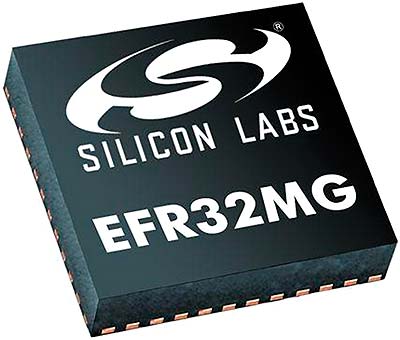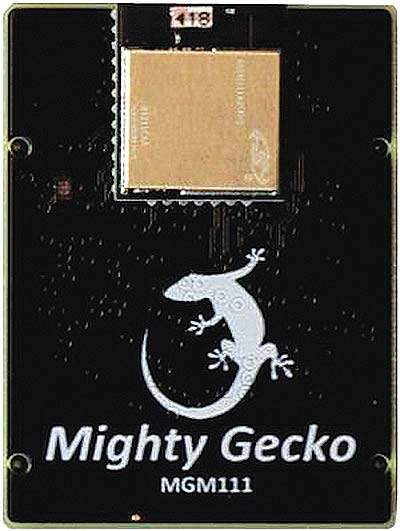 You want to control your lights wirelessly. How do you know which wireless technology to use? In this article Silicon Labs will provide insight into home wireless connected lighting. Trends in wireless technologies, protocols, and a home connected lighting application is presented.
You want to control your lights wirelessly. How do you know which wireless technology to use? In this article Silicon Labs will provide insight into home wireless connected lighting. Trends in wireless technologies, protocols, and a home connected lighting application is presented.
Home Wireless Connected Lighting Market
According to research firm IHS Markit, the residential smart lighting market was valued at $1B in 2015. IHS projects the market to expand at a 30% compound annual growth rate from current 2015 to 2020 globally.
Connected lighting and home automation presents challenges to early adopters and innovative entrepreneurs. Market makers must design simple, flexible, reliable lighting control solutions that feature security, future proof updates, and an ecosystem with device interoperability. Designers want to know which wireless protocols are best suited for wireless connected lighting.
Wireless Protocols for Connected Lighting Control
Wi-Fi connectivity is ideal for high data rate products and services in the connected home, and for providing connectivity to the Internet cloud via home gateways. However, Wi-Fi is not suited for lighting networks due to Wi-Fi’s large protocol stack, memory and processor power requirements, and its star network topology.
Several different wireless technologies, shown in Figure 1, are available in this market to address elements of wireless lighting control. Wi-Fi, Bluetooth, ZigBee and Thread for mesh networking, and proprietary sub-GHz protocols, address lighting control needs. Mesh networks provide a communications backbone that allows a wide variety of connected wireless devices, such as Smart LED lights, switches, thermostats and sensors.
Bluetooth enabled devices in a connected home provide direct connectivity to smartphones applications providing device control without the power consumption of Wi-Fi, However, Bluetooth/BLE has a limited network device count, lacks scalability and the benefits of a mesh network.
ZigBee networking technology is a local mesh network based on the 802.15.4 standard that is scalable to hundreds of devices. The ZigBee cluster library defines features of smart lights and home automation devices that provide control of Smart light of dimming, RGB color, and color temperature. The ZigBee mesh networking along with cluster libraries is ideal for lighting control. However, direct smartphone control isn’t supported. The ZigBee gateway router is required to serve as a bridge to connect ZigBee devices to a Wi-Fi or Ethernet IP-based LAN network enabling Internet control and cloud connectivity.
Thread is an emerging mesh network technology that provides IPv6 networking protocol built on open standards for low-power 802.15.4 mesh networks that can securely connect hundreds of devices to each other and directly to the Internet Cloud. Thread 1.1 is emerging so only a small number of thread-based devices are available. Thread devices are able to run the ZigBee application layer which provides interoperability with the available ZigBee home control devices. “A key strength of the ZigBee Alliance’s technologies is our application layer – the only mature, widely deployed, interoperable and open IoT application language” said Tobin Richardson, President and CEO of the ZigBee Alliance.
Finally, Proprietary protocols are used in closed ecosystems. Multi-band radios may be used to provide sub-GHz bands instead of 2.4GHz, which can provide a longer range and improve propagation in homes.
Multi-Protocol in Lighting Applications
The evolution of embedded wireless SoCs with multi-protocol stacks is becoming a differentiator to provide product upgradeability, better user experience, and enhanced use cases for connected lighting designs and home automation. A multi-protocol application for Bluetooth/BLE is for commissioning a device to join a network, which may be running both ZigBee or Thread and Bluetooth at the same time. Switched Multi-Protocol in an implementation of a multi-protocol platform that provides the ability to change which wireless protocol is supported by bootloading a new firmware image while the device is deployed in the field.
This requires some fundamental building blocks to be in place, but opens up opportunity for future proofing existing products.
There are two primary cases for switched multiprotocol; Future-Proofing and Commissioning.
Future Proofing. The IoT is an evolving market for device manufacturers. There are many wireless protocols available currently and under development. It is difficult to determine which one will deploy, dominate, or become the defacto standard in their markets. A device manufacturer may plan to sell their device into different ecosystems or may plan for an ecosystem change over time. A light bulb manufacturer may ship Bluetooth enabled light bulbs so that consumers can immediately directly control their lights from their smartphone via a supplied app. In the future, the consumer may purchase a home automation system that uses ZigBee or Thread or some proprietary protocol and may wish to add the light bulb into that ecosystem. An ecosystem may deploy ZigBee networking today, but may switch to Thread protocol later when their application layer and IPv6 features are mature. The recent Bluetooth Mesh feature announced in Bluetooth 5.0 will offer a Mesh alternative to Zigbee and Thread. Implementing multi-protocol solutions will provide an upgrade path for future proofing.
Commissioning via Smartphone. A device manufacturer will chose a wireless protocol for lighting control, however they may want to use a smartphone app to commission devices onto the network. Implementing Smartphone control requires a Bluetooth commissioning application on the device; a commissioning application on a smartphone; and a Bluetooth application with network authentication on the Home Gateway.
Using the smartphone app the user can authenticate the device to join the network, set up a pairing with other lighting or home automation devices in the network, then switch over to the ZigBee or Thread wireless stack that the network is running. Each wireless network will have its own mechanisms for joining and pairing devices, but all can be accommodated with this mechanism.
In Figure 2, the smartphone uses a BLE connection to the wireless lightbulb to commission the device on the ZigBee or Thread network. The user operates the smartphone app to get the device joined onto the network, set up BLE pairing with other appropriate devices in the network, then switches over to ZigBee or Thread mesh network stack used by the lighting control network.
Wireless SoC and Modules deliver multi-protocol performance
The system-on-chip implementation is the critical device to support wireless standards, ensuring interoperability among connected devices supporting these standards. The SoC device must have adequate flash memory to be able to store multiple protocol stacks in firmware and to enable dynamic switching among the protocols as devices join the network. Equally important is the application layer software that connects the end user to the hardware. Leading SoC vendors are offering comprehensive hardware, protocol stacks, and software development tools to support the design of multi-protocol devices. This unified hardware and software approach to multiprotocol connectivity will ensure seamless interoperability of wireless lighting devices and sensors.
Silicon Labs EFR32MG1B132F256GM48-B0 1.85 → 3.8V Wireless MCU, Thread, ZigBee, ZigBee RC
RS Stock # 915-6512
Mfr. Part # EFR32MG1B132F256GM48-B0
Brand Silicon Labs
The Silicon Labs Mighty Gecko EFR32MGxxx32Fx SoCs feature a 32-bit ARM Cortex-M4 processor core with a highly integrated radio transceiver supporting various 2.4GHz wireless protocols. Typical applications involve home and building automation and security, metering, industrial automation, commercial and retail lighting and sensing. The devices are ideal for any battery operated application and other systems requiring high performance and low energy consumption.
Silicon Labs’ Mighty Gecko family of SoCs is ideal for designing energy-friendly wireless connected IoT devices. Part of the Wireless Gecko portfolio, the Mighty Gecko is the superset part and supports 2.4GHz and Sub-GHz protocols, including Zigbee, Thread, BLE, and Silicon Labs Connect stack for 2.4GHz, as well as Sub-GHz for proprietary protocols and the Connect stack.
 • 40MHz 32-bit ARM Cortex-M4F core MCU with up to 1MB Flash memory, up to 256KB RAM
• 40MHz 32-bit ARM Cortex-M4F core MCU with up to 1MB Flash memory, up to 256KB RAM
• RF Frequency Range: 2.4GHz ISM band
• RF Output Power: up to +19.5dBm
• Integrated DC-DC converter with RF noise mitigation
• 12-channel Peripheral Reflex System enabling autonomous interaction of MCU peripherals
• Hardware Crypto Accelerator and True Random Number Generator
• Protocol stack: ZigBee, Thread, ZigBee RC. Also Bluetooth Smart and Proprietary on Performance parts
Silicon Labs Mighty Gecko 2.4GHz RF Transceiver Add On Board for MGM111A
RS Stock # 124-3498
Mfr. Part # SLWRB4300B
Brand Silicon Labs
The SLWRB4300B Module Radio Board allows the MGM111A 2.4GHz wireless module to be evaluated using the SLWSTK6000A Wireless Starter Kit, RS Part No. 915-6604. The starter kit is required to gain access to the ZigBee® and Thread software stacks.
Silicon Labs’ MGM111 Mighty Gecko Module is a pre-certified module with a Mighty Gecko wireless SoC that saves months of design and development effort.
The MGM111 is based on the EFR32 Mighty Gecko SoC, a highly integrated, energy efficient device that includes an ARM Cortex-M4 with DSP extensions and an FPU, and a 2.4 GHz radio with support for wireless mesh networking using the ZigBee or Thread protocols for low-power wireless applications in the lighting, connected home, building automation.
 • 40MHz Cortex-M4F core wireless SoC with 256KB Flash memory, 32KB RAM
• 40MHz Cortex-M4F core wireless SoC with 256KB Flash memory, 32KB RAM
• RF Operating Frequency: 2400-2483.5MHz
• RF Output Power: up to +10dBm
• Receiver Sensitivity: -99dBm @ 62.5ksymbol/sec, OQPSK with DSSS, PER 1%
• Modulation: OQPSK
• Supported Protocols: ZigBee, Thread
• Cryptographic engine with support for AES-128/-256, ECC, SHA-1 and SHA-256
• Random Number Generator
• Real-Time Clock
• Chip antenna with balun
• Ultra-low power operating modes
• Fast wake-up time with Wake-on-Radio
• Power supply: +1.85V to +3.8Vdc
• Operating temperature range: -40 to +85°C
• Dimensions: 45 mm × 30mm
Author: Bogdan Grămescu




